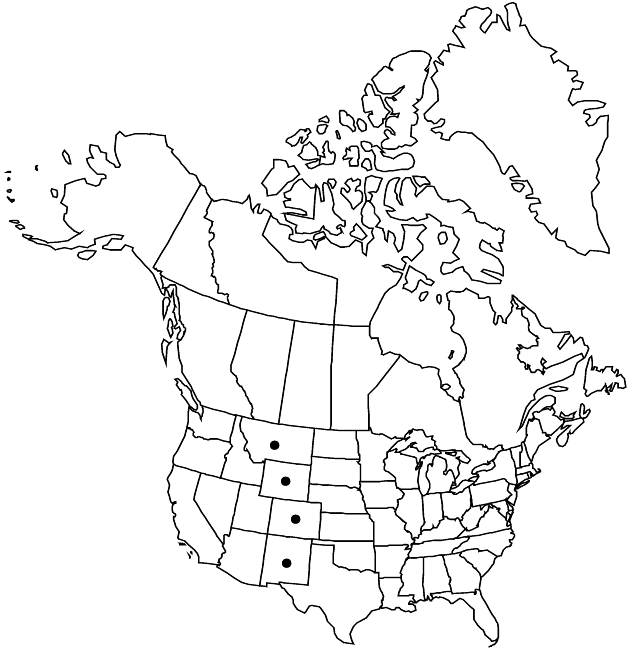Tonestus pygmaeus
Bot. Gaz. 37: 262. 1904.
Perennials, loosely cespitose, 1–9 cm; with branched caudices surmounting well-developed taproots. Stems densely hairy, sometimes also stipitate-glandular. Leaves: basal blades linear to spatulate, 10–50 (–95) × 1.5–6 mm; cauline blades oblong to broadly lanceolate, 15–34 × 3–7 mm, gradually reduced distally; 3–5-nerved, margins entire, ciliate, sometimes stipitate-glandular, faces eglandular or sparsely stipitate-glandular. Heads 1 (–2). Peduncles 3–8 mm. Involucres broadly campanulate, 8–20 × 7–12 mm. Phyllaries 16–34, in 3–4 (–5) series, 1-nerved or weakly 3–5-nerved, ± equal, margins ciliolate at least distally; outer and mid green, ovate to oblong, 4.5–10.5 × 1.5–5.5 mm, foliaceous, apices rounded to obtuse, faces sparsely stipitate-glandular distally; inner green or usually anthocyanic, linear to narrowly oblong, 5–9 × 0.9–4 mm, chartaceous proximally, margins scarious, often fimbriate, sometimes stipitate-glandular, apices acute to acuminate, sometimes reflexed, faces sparsely stipitate-glandular distally. Ray-florets 10–16 (–35); laminae elliptic, 6.5–8.5 × 1.5–3.5 mm. Disc-florets 43–66; corollas narrowly funnelform, 4.5–7.5 mm, lobes erect to spreading, 0.8–1.2 mm, lengths ca. 1/7 corollas; anthers 2.2–2.8 mm; style-branch appendages lanceolate, 0.8–1.1 × 0.3 mm wide, stigmatic lines 0.6–1 mm. Cypselae cylindric, 2–5 mm, 8–9-nerved, faces villous; pappus bristles ± 34–51, flexible. 2n = 18.
Phenology: Flowering and fruiting early–late summer.
Habitat: Meadows, fellfields, talus slopes, rock crevices, dwarf coniferous forests in alpine and upper subalpine communities, on soils of usually granitic, sometimes limestone origin
Elevation: 3100–4100 m
Distribution

Colo., Mont., N.Mex., Wyo.
Discussion
Tonestus pygmaeus is uncommon in Wyoming, known only from the Snowy Range of the Medicine Bow Mountains. Attribution of this species to Montana is based on historic collections.
Selected References
None.